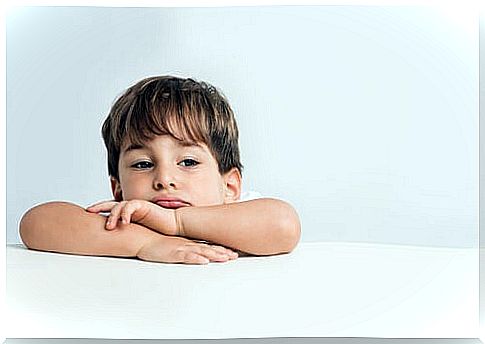How To Explain Emotions To Children?

Emotions are characteristic internal states of human beings, determined by sensations, thoughts, behaviors and subjective reactions. They have an enormous influence on behavior and thoughts, especially for children. Therefore, it is necessary to know and know how to explain emotions to children.
Helping them to know themselves and to recognize their emotions will favor their correct mental development. Furthermore, they will learn to control themselves, will have a high self-esteem which will contribute to their happiness.
Why is it important to explain emotions to children?
Studies have shown that emotional education in the home increases the family’s well-being. The idea is to provide methods within the family to regulate emotions without avoiding or exaggerating them.
Some of the most important benefits are:
- It allows the child to know themselves and increase their perception of control over what happens to them.
- It is fundamental for the child’s social development.
- Decreases aggressive behavior in places of study.
- It reduces the possibilities of consuming addictive substances such as alcohol and tobacco.
- It minimizes the percentage of antisocial, self-destructive behavior and avoids the serious damage caused by them.
It is important to emphasize that emotions must be controlled, not repressed. The child must learn to express them depending on the moment, the people and the occasion.

Know the emotions
Children are born with emotions, but how they react to them can be innate or acquired behavior. The course of life may depend on how emotions are controlled. Hence the importance of explaining emotions to children.
The first emotions to work with children are as follows:
- Anger: is the anger generated when the child does not get what he wants. If the little one is not able to control it, over time it can manifest behavioral problems.
- Fear: this is insecurity in the face of imaginary or real dangers. It generates positive behaviors, as it motivates people to act with caution. However, it must be controlled so that it does not become an excessive fear.
- Contempt/disgust: is the feeling of aversion towards someone or something. Children are often disgusted by certain foods; this makes them refuse them and not want to eat.
- Sadness: feeling of pain with a tendency to cry. It can be associated with a real or imagined loss. Losing a toy or a pet can make the child sad.
- Joy: feeling of pleasure caused by a favorable event, person, thing or desire. It drives action, affection and gratitude.
- Surprise: is the feeling of amazement; it helps the child to understand new things and motivates him to look for answers and solutions.
Use different methods to explain emotions to children
Every opportunity should be taken to help your child recognize and express emotions. If the child is reserved, use simple methods that facilitate communication and are fun.
Games to explain emotions to children
Here are some practical activities you can include in your daily routine:
- Puppet theater of emotions. Write in several letters different emotions. Use a character or puppet to interpret a story with the emotions written on the cards. This game will encourage the expression of your child’s feelings.
- Emotions detective. It consists of introducing the child to different characters from stories, internet or magazines and asking him to discover the emotional state of each one. Each one should explain what they think are the causes of the characters’ emotional state.
explain emotions with music
From a very early age, children have the ability to process music, so that it can change the mood. Music releases emotional function and pent-up energy.
For this reason it is a good method to teach children. Select different music styles and listen to them with your child. Then ask him to express the emotion that provoked him.

give a gift diary
It is difficult for children over 6 to express their emotions, so having a diary to describe them can be helpful. In this way, you will not feel pressured to tell your feelings brusquely, but little by little will be encouraged to express yourself freely.
Suggestions for Developing Emotional Intelligence in Children
Emotional intelligence is the ability to recognize your own feelings and those of others. Motivate the child to deal with emotions in different circumstances. It’s important to have a balanced personality.
To help your child develop emotional intelligence, follow these suggestions:
- Motivate her to express what she feels.
- It helps her to know her preferences, needs, opinions, desires and limitations.
- Encourage her to try to solve her problems and offer help if necessary, giving suggestions.
- Recognize your efforts.
- Show him how to recognize his mistakes and demonstrate that they are a primary part of learning.
- Explain the importance of respecting the tastes and emotions of others.
Knowing how to explain emotions to children will help you get to know their inner world and, at the same time, will open the door for them to do the same. Without a doubt, it will contribute a lot to everyone’s well-being and happiness.









